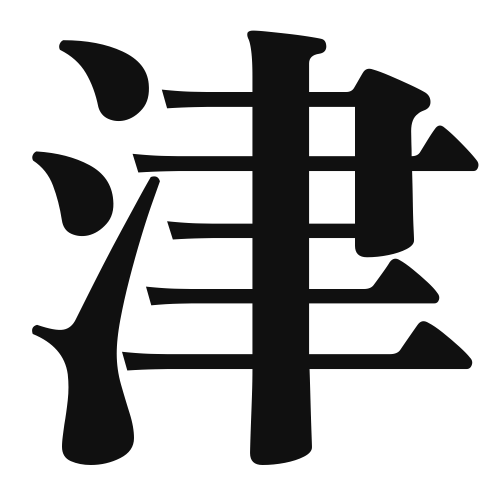1. Overview of Meaning
The kanji “津” (tsu) primarily means “port” or “harbor.” It refers to a place where ships dock and is often associated with transportation and trade.
2. Origin and Radical
Formation of the Kanji: The kanji “津” is a phonetic-ideographic character (形声文字). It combines the meaning of a place related to water with a phonetic component that suggests its pronunciation.
Radical: The radical for “津” is “水” (mizu), which means “water.” This radical indicates the kanji’s connection to bodies of water, essential for ports and harbors.
3. Examples of Usage
Common Words and Phrases: Some frequently used words that include “津” are “津波” (tsunami – tidal wave) and “港津” (kōtsu – port).
Example Sentences in Daily Conversation:
- 「この町には大きな津があります。」(Kono machi ni wa ōkina tsu ga arimasu.) – “This town has a large port.”
- 「津波が来る前に避難してください。」(Tsunami ga kuru mae ni hinan shite kudasai.) – “Please evacuate before the tsunami arrives.”
4. Synonyms and Antonyms
Similar Kanji: A similar kanji is “港” (minato), which also means “port” but can refer more specifically to a harbor for larger ships. “津” tends to refer to smaller docking areas.
Antonyms: An antonym could be “陸” (riku), meaning “land,” which contrasts with the idea of a port or harbor that is associated with water.
5. Cultural and Historical Background
Connection to Japanese Culture: The concept of “津” is significant in Japan, an island nation with many ports that have historically facilitated trade and cultural exchange.
Proverbs and Idioms: One relevant proverb is “津波の前の静けさ” (tsunami no mae no shizukesa), which translates to “the calm before the storm,” highlighting the importance of being aware of changes in one’s environment, much like the unpredictable nature of the sea.
